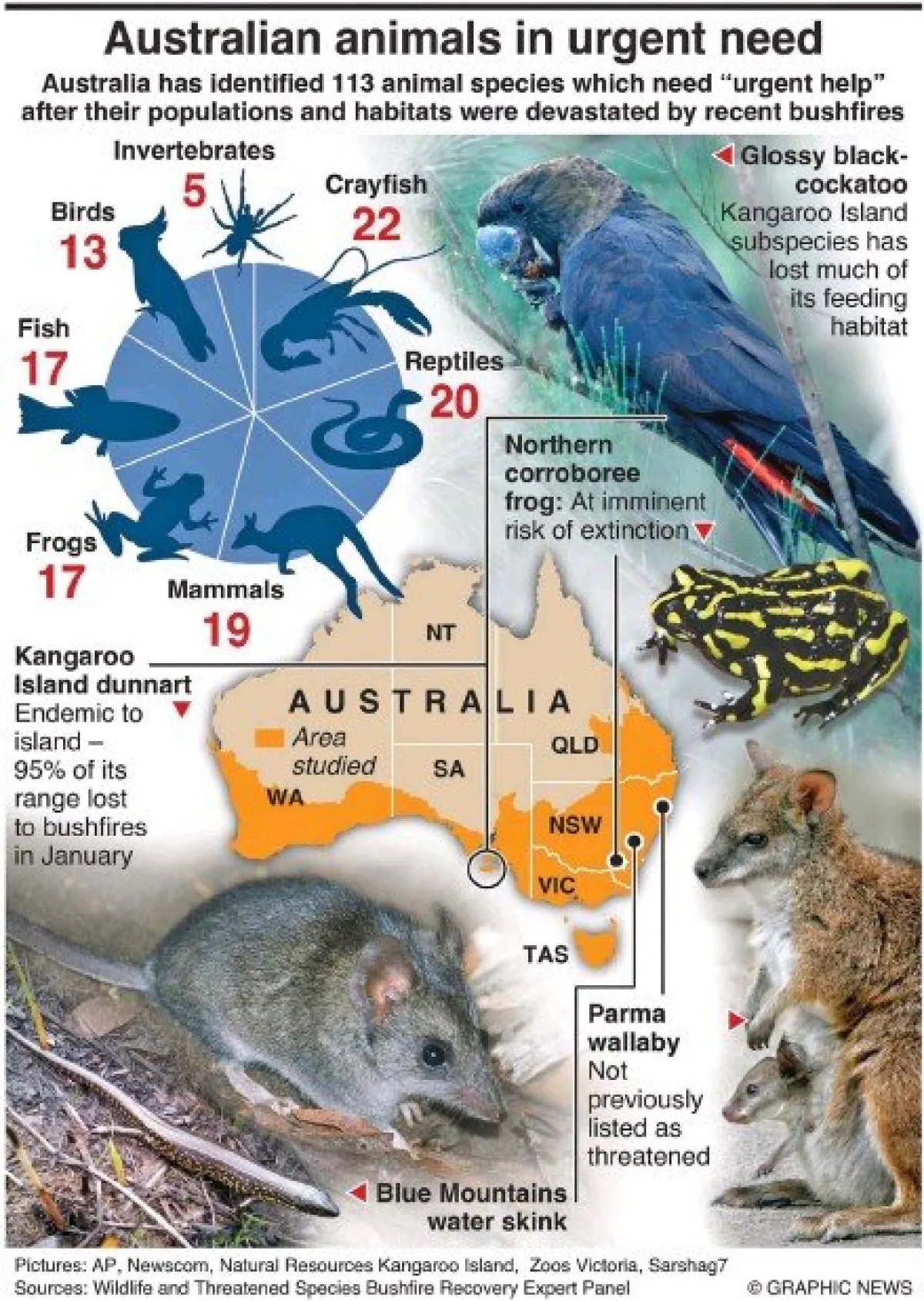Spatial genetics in fire-ground fauna
The devastating fires of the 2019-20 summer impacted some 9M Ha of the eastern forests from SE QLD to eastern Victoria, much of the natural habitats of Kangaroo Island (SA) and the Stirling Ranges (WA).
Event series
Content navigation
Description

www.graphicnews.com/en/pages/39963/environment-australian-animals-in-urgent-need
The devastating fires of the 2019-20 summer impacted some 9M Ha of the eastern forests from SE QLD to eastern Victoria, much of the natural habitats of Kangaroo Island (SA) and the Stirling Ranges (WA). The necessary, immediate response has been to identify priority species for rapid survey and intervention across the fire grounds, including pockets of lower fire severity. Over the mid-long term, considerable investment will be necessary to protect and reconnect these fire refuges. This will require a major investment from responsible agencies and will need decisions about where to concentrate effort across this vast area.
The rapid assessment recently completed by the DAWE Wildlife and Threatened Species Bushfire Recovery Expert Panel Expert Panel identified 113 priority species based on pre-fire threat level, extent of overlap of range with the fires, and ecological sensitivity to fire (immediate or in recovery phase).
However, species are not genetically uniform across their range. Especially for habitat specialists or low dispersal species, they often comprise multiple genetically divergent sets of populations (Evolutionarily Significant Units; ESUs) which themselves should be assessed and managed to ensure retention of genetic diversity. At the extreme, some species could represent multiple, as-yet undescribed species. Such taxa (candidate species or ESUs) were invisible to the recent DEWA assessment. Conversely, some named subspecies that were prioritised could have very little genetic divergence from others. Our published analyses of spatial variation in the rainforest fauna found that areas north vs south of Sydney harbored different sets of diversity (Rosauer et al. 2015. PLoS ONE).
Responses from colleagues confirm that there is existing spatial genetic data for many (but not all) of the DEWA priority species; some data is published, some not. This includes data recently generated via the BPA Oz Mammals Genomics Initiative. Where genetic data is available, some taxa have sparse sampling of space or genes which would need to be improved for robust assessment.
We propose a rapid and urgent assessment of the extent of genetic divergence across faunal populations in fire-affected areas (SEQld – NE Vic, KI vs mainland SA, Stirling Ranges WA) to guide:
- Surveys for remnant populations of the already identified priority species; and, including other geographically overlapping and fire-sensitive taxa; and
- Geographic areas for investment to recover the biota.
This effort will mobilise the CBA network across museums, universities and CSIRO and will build on the capacity built for BPA projects.
Workshop outcomes
- Co-contribution to NESP Threatened Species Recovery Hub project: Genetic assessment of priority taxa and management priorities
- Catullo, R. et al. 2021. Benchmarking Taxonomic and Genetic Diversity After the Fact: Lessons Learned From the Catastrophic 2019–2020 Australian Bushfires Front. Ecol. Evol. 9: 292. https://doi.org/10.3389/fevo.2021.645820
Location
Online via Zoom

